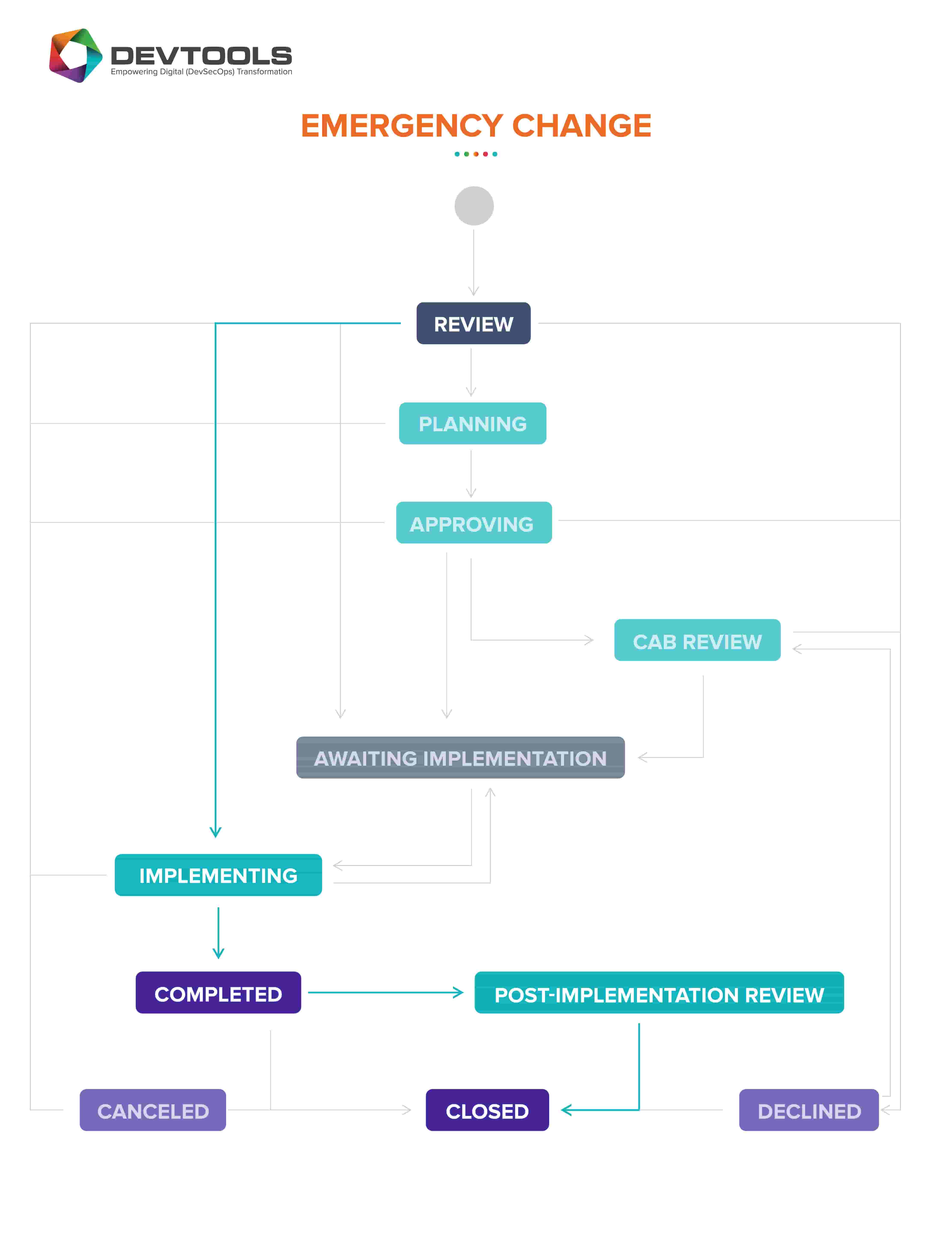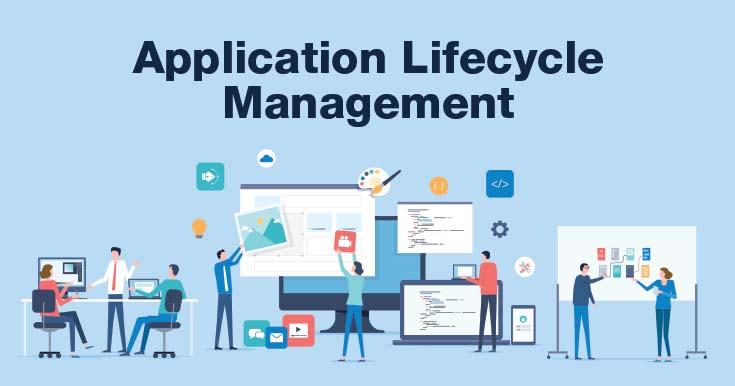What Is Change Management Process? Definition, Process & Practices

For businesses to thrive in today’s dynamic market, embracing change is crucial. But, navigating change can be challenging, requiring employees to swiftly acclimate to new settings or structures. To achieve organisational goals seamlessly, this article explores vital change management process & principles to facilitate effective restructuring.
What Is Change Management?
Change Management involves planning, controlling, and understanding the impact of alterations on business operations. Utilising an ITIL change management workflow from the IT Service Desk template enhances change success. This workflow handles the recording, evaluation, approval, and implementation of change requests. It is recommended to begin with the basic process and then customise it to match your needs.
An effective change management process:
- Improves the stability of IT services
- Improves the dependability and predictability of IT services
- Adapts IT services to changing business needs
Types of Change Management in ITIL
Change Management Process in IT aims to minimize service disruptions during modifications to crucial systems and services. A change refers to adding, altering, or removing anything that could impact services directly or indirectly.
Standard Changes
- Low-risk, repetitive, and pre-approved modifications.
- Follow a well-defined, documented process.
- Automation-friendly; potential for up to 70% automation.
Examples:
- Adding memory or storage
- Replacing a failing router with an identical one
- Creating a new database instance
Normal Changes
- Non-emergency changes lack a pre-approved process.
- Vary in risk; some need assessment and approval.
- Approval by designated authority or through automated checks.
Examples:
- Upgrading to a new content management system
- Migrating to a different data centre
- Implementing performance improvements
Emergency Changes
- Urgent changes prompted by unexpected errors or threats.
- Addressed immediately to restore service or enhance security.
- Faster handling due to a higher risk of delays in review.
Examples:
- Applying a security patch
- Resolving a server outage
- Addressing a major incident
Change Management Process categorisation should be based on organisation, processes, and risk tolerance. A tailored approach is recommended, treating each change uniquely based on risk assessment. Over time, more changes can be designated as standard and pre-approved, streamlining change requests.
Additionally, modern change management aims for simplicity and efficiency in change requests by leveraging organisational insights and relevant data from previous incidents and systems.
What is Change Management Process?
Following ITIL best practices, this workflow ensures approved and tracked Change Management Process. It includes steps for thorough planning and assessment of significant and high-risk changes without impeding urgent critical changes. Relevant stakeholders contribute their expertise and approvals throughout.
Also, automation rules offer different channels for different modifications, allowing emergency updates that avoid lengthy approvals.
Normal Workflow
Normal changes necessitate critical modifications to a service or infrastructure, but your method may be inefficient. Planning and assessing it is important.

Standard Workflow
The standard change occurs frequently, is low risk, and has a pre-established procedure. There are fewer approvals and less planning required.

Emergency Workflow
It is essential to assess and implement emergency changes as soon as possible. This type of change omits a few workflow steps and moves into implementation.

How to Categorise the Changes?
While the categories offer a valuable framework, it’s best for teams to adapt them to their specific requirements. Your team’s approach to categorizing changes will be influenced by factors like your organization, processes, and risk tolerance. Besides, as your organization gains insights from past incidents and integrates relevant data, you can progressively classify more changes as standard and pre-approve them. Contemporary Change Management Process aims to simplify and streamline change requests.
Some Best Practices for Change Management Process
Optimal Practices for Change Management are often cumbersome and complex, but it doesn’t have to be. Effective IT change management model enhances agility, reduces incidents, and minimises disruptions. Here are 5 critical practices to initiate successful change management:
- Align with Risk Tolerance: Tailor change practices to your organization’s unique culture, risk tolerance, and regulatory demands. Regulatory obligations, such as SOX and GDPR, bring non-negotiable rules. You can adjust processes over time to balance rigour with risk.
- Data-Driven Adaptation: Continuously improve change practices through data-driven insights. Analyse change-incident links to optimise workflows. Gradually standardise and automate routine changes based on successful trends.
- Simplify: Simplify change management to make it user-friendly. Minimize approvals, integrate tech tools and automate processes using Jira Service Management for smoother operations.
- Modernise the CAB Model: Reimagine the Change Advisory Board (CAB) model. Prioritise CAB approvals for high-risk changes, delegate strategy and risk reduction and shift to virtual, real-time collaboration for efficient decision-making.
- Embrace ITIL Flexibly: Approach ITIL as foundational guidelines, not rigid rules. Blend ITIL with other cultural approaches, such as DevOps, Agile, and CD, to build an adaptable change management practice.
Implementing these practices can streamline change management plan and enhance your organisation’s overall effectiveness.
Best Software for Change Management Process
Jira Service Management
With Jira Service Management, IT operations teams get a solution that provides them with the tools necessary to minimize risk and make better decisions. The solution provides better information surrounding Change Management Process, team members participating, and tasks closely related with the change to IT operations teams.
You can rely on Jira Service Management to identify whether a change can be auto-approved due to low risk or requires additional approval due to high risk. You can also customize approval workflows based on established protocols, risks, and types of changes.
Features:
- Configurable Workflows
- Jira Automation Powered Risk Assessment Engine
- Deployment Tracking
- Asset Management
- Request Management
- Incident Management
Verdict:
Jira Service Management is an exceptional Change Management Process solution that provides DevSecOps, and Business teams with full context on information around changes so they can respond to it considerably more efficiently.
How DevTools Can Help In Change Management Process?
Change management is aided by DevTools, which provide:
- Version Control: Track and revert code changes.
- CI/CD Pipelines: Automate testing and deployment.
- Infrastructure as Code: Manage consistent infrastructure.
- Monitoring: Detect changes’ impact on performance.
- Collaboration: Coordinate teams and communicate changes.
- Configuration Management: Ensure consistent setups.
- Automated Testing: Verify changes before deployment.
Integrating DevTools improves the efficiency and dependability of change management.
FAQs
The organized strategy of preparing, directing, and assisting individuals, teams, and entire organizations through significant changes in procedures, structures, systems, or culture is referred to as organizational change management (OCM). OCM is concerned with reducing resistance, increasing acceptance, and guaranteeing a smooth transition to the target state. During times of change, it includes strategies, resources, and tactics for communicating, educating, involving, and motivating stakeholders.
Maintaining efficient communication is critical for keeping everyone up to date on the changes. Here are some measures to take to do this:
• Clear Communication Plan: Develop a complete communication plan that explains what information needs to be communicated, who needs to receive it, when it will be shared, and how it will be shared.
• Stakeholder Engagement: Identify and include key stakeholders early in the change process. Address complaints, solicit input, and provide updates through two-way contact.
• Various Communication Channels: To reach diverse sectors of the organization, use a range of communication channels such as emails, town hall meetings, workshops, intranet portals, and newsletters.
• Consistent Messaging: Make certain that messaging is consistent, transparent, and connected with the change’s aims.
Various critical difficulties may occur during the course of a change management process, including:
• Resistance to Change: Employees may resist change owing to uncertainty about the unknown, a loss of control, or fears about their abilities becoming irrelevant.
• Lack of Leadership Support: A lack of visible and dedicated leadership support may cause employees to question the legitimacy and impact of the change.
• Poor Communication: Inadequate or confusing communication can result in misunderstandings, rumors, and uncertainty among staff.
• Insufficient Training: Employees may struggle to adjust to new processes or technology if they are not properly trained and supported.
• Ambiguous Goals: If the objective and advantages of the change are not clearly articulated, employees may fail to recognize its worth and relevance.
While all elements in the change management process are crucial, the first step, Creating a Sense of Urgency, is sometimes seen as the most critical. This phase includes clearly explaining the need for change and why it is critical to the success of the organization. It helps to encourage employees and stakeholders to support the change by educating them on the potential risks of not changing and the benefits of changing. Moreover, creating a feeling of urgency sets the tone for the rest of the change management process and drives participation and commitment at all organizational levels.




